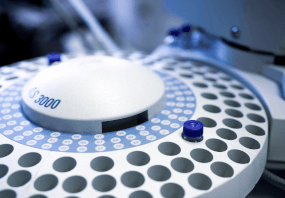General description
Tau (τ), also known as MAPT (microtubule associated protein tau), is encoded by the gene mapped to human chromosome 17q21.3. It is highly expressed in neurons, but is most prominent in axons.
Tau is a family of microtubule-associated proteins thought to regulate the stability and organization of microtubules in neuronal cells. The tau protein family is derived from alternative mRNA splice variants that originate from a single gene, and result in mature proteins that vary in size from 352 to 441 amino acids (45 to 60 kDa). Tau loses microtubule-binding activity and aggregates into paired helical filaments (PHFs) in neurodegenerative disorders. PHFs are the basic structural components of neurofibrillary tangles (NFTs). NFT accumulation correlates with the clinical progression of Alzheimer′s disease. Phosphorylation can affect the functional properties of tau and hyperphosphorylation of tau may result in the loss of tau′s microtubule binding activity and the formation of the insoluble aggregates. Hyperphosphorylation and nonenzymatic glycosylation are posttranslational modifications detected in PHF-tau, and numerous sites of hyperphosphorylation of both normal and PHF-tau have been identified.
Specificity
Mouse monoclonal clone Tau46 anti-Tau antibody recognizes bovine, rat, human, and mouse Tau (approx. 45 to 60 kDa). The antibody recognizes a phosphorylation-independent epitope in amino acids 404-441 (human). The antibody recognizes all six isoforms of Tau and may cross react with MAP2 protein.
Immunogen
bovine Tau.
Application
Anti-Tau antibody, Mouse monoclonal has been used in western blotting.
Applications in which this antibody has been used successfully, and the associated peer-reviewed papers, are given below.
Western Blotting (1 paper)
Mouse monoclonal clone Tau46 anti-Tau antibody is useful in ELISA, immunoblotting, immunogold labeling, immunopreciptation as well as immunohistochemistry. It is used as a probe to determine the presence and roles of Tau protein in the regulation of the stability and organization of microtubules in neuronal cells.
Biochem/physiol Actions
Tau (τ) plays an essential role in the assembly and maintenance of microtubule structure. Deletion of tau (τ) results in developmental delay and learning disability. The gene expression is associated with the development of Alzheimer′s disease (AD). Genetic variation in τ gene increases the risk of susceptibility to the sporadic tauopathies, progressive supranuclear palsy (PSP) and corticobasal degeneration.
Physical form
Solution in 0.01 M phosphate buffered saline, pH 7.4, containing 15 mM sodium azide.
Disclaimer
Unless otherwise stated in our catalog or other company documentation accompanying the product(s), our products are intended for research use only and are not to be used for any other purpose, which includes but is not limited to, unauthorized commercial uses, in vitro diagnostic uses, ex vivo or in vivo therapeutic uses or any type of consumption or application to humans or animals.
Shipping Information:
Dry Ice Surcharge & Ice Pack Shipments: $40
More Information: https://cenmed.com/shipping-returns
- UPC:
- 41116012
- Condition:
- New
- Availability:
- 3-5 Days
- Weight:
- 1.00 Ounces
- HazmatClass:
- No
- MPN:
- T9450-100UL
- Temperature Control Device:
- Yes












